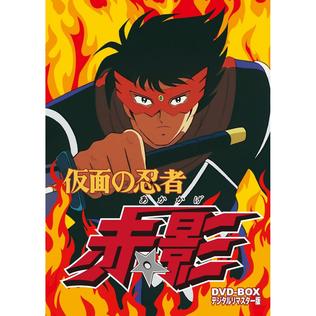 W
WAkakage is a fictional Japanese superhero featured in several manga and anime, as well as live action movies and TV shows. Akakage first appeared in the 1967 TV series, Kamen no Ninja Akakage which was produced by Toei Company Ltd..
 W
WMarvel's Daredevil, or simply Daredevil, is an American television series created by Drew Goddard for the streaming service Netflix, based on the Marvel Comics character of the same name. It is set in the Marvel Cinematic Universe (MCU), sharing continuity with the films of the franchise, and is the first in a series of shows that lead to The Defenders crossover miniseries. The series is produced by Marvel Television in association with ABC Studios, with DeKnight Productions for the first season and Goddard Textiles for the first and second seasons. Steven S. DeKnight served as showrunner on the first season, with Doug Petrie and Marco Ramirez taking over for the second season, and Erik Oleson joining the series as its showrunner for its third season; Goddard served as a consultant for the series.
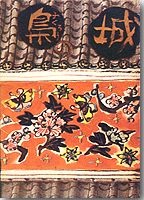 W
WFukurō no Shiro is the ninja-themed 1959 debut novel of Japanese author Ryōtarō Shiba, which won him the Naoki Prize in 1960 after the story was published by Kodansha. It has been adapted into a 3-part "Naoki Award Series" TV broadcast on the Fuji Television Network in 1960, and into two jidaigeki-genre films, Castle of Owls in 1963 and Owls' Castle in 1999.
 W
WFuun Lion-Maru , known as Lion-Man outside Japan, was a tokusatsu television series that aired on the Fuji Television Network in Japan in 1973. Produced by P Productions — the studio behind its previous tokusatsu series including Magma Taishi, Spectreman and Kaiketsu Lion-Maru, it was the second series in the Lion-Maru trilogy, and featured a third Maru-like character named Black Jaguar. It also reunites only two actors: Tetsuya Ushio as Shishimaru and Yoshitaka Fukushima as Jonosuke, since Akiko Kujo and Norihiko Umechi were not featured in the sequel series. This Lion-Maru is deemed "the Rolling Tempest Ninja Warrior." This series was popularized in Brazil as Lion Man in 1989, the only other country besides Japan to show the 25 episodes of this series.
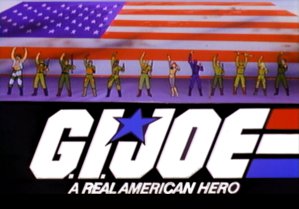 W
WG.I. Joe: A Real American Hero is a half-hour American animated television series created by Ron Friedman. Based on the toyline from Hasbro, the cartoon ran in syndication from 1983 to 1986. 95 episodes were produced.
 W
WJiraiya , originally known as Ogata Shuma Hiroyuki, is the toad-riding protagonist of the Japanese folk tale Jiraiya Gōketsu Monogatari . The tale was adapted into a 19th-century serial novel, a kabuki drama, several films, video games, and a manga and has also influenced various other works.
 W
WKabuki is a comic book series created by artist and writer David Mack, first published in 1994 by Caliber comics in KABUKI: Fear The Reaper 48 page comic book.. It is a story of an assassin who struggles with her identity in near-future Japan. The 2004-2009 miniseries, Kabuki: The Alchemy, was published by Marvel Comics under its imprint Icon Comics. The series has been collected into several trade paperbacks, which include several one-shots and spin-off limited series.
 W
WKage Kara Mamoru! is a Japanese series of light novels written by Achi Taro. The light novels had ended in March 2008 with the release of Volume 12, but as of July 2009, a new series entitled Motto! Kage Kara Mamoru! has started serialization. It features manga and anime adaptations. The main character is Mamoru Kagemori, a ninja who is sworn to protect his neighbor Yūna Konnyaku.
 W
WKaiketsu Lion-Maru , was a Japanese tokusatsu television series in the Lion-Maru franchise that aired in 1972-1973, produced by P Productions and set during Japan's Sengoku period.
 W
WMighty Morphin Power Rangers is an American superhero children's television series that premiered on August 28, 1993, on the Fox Kids programming block. It is the first entry of the Power Rangers franchise, and became a 1990s pop culture phenomenon along with a large line of toys, action figures, and other merchandise. The show adapted stock footage from the Japanese TV series Kyōryū Sentai Zyuranger (1992-1993), which was the 16th installment of Toei's Super Sentai franchise. The second and third seasons of the show drew elements and stock footage from Gosei Sentai Dairanger and Ninja Sentai Kakuranger, respectively, though the Zyuranger costumes were still used for the lead cast in these two seasons. Only the mecha and the Kiba Ranger costume from Dairanger were featured in the second season while only the Kakuranger mecha was featured in the third season, though the Kakuranger costumes were later used for the mini-series Mighty Morphin Alien Rangers. The series was produced by MMPR Productions and distributed by Saban Entertainment, while the show's merchandise was produced and distributed by Bandai Entertainment. The series was well known for its campy tone.
 W
WMighty Morphin Power Rangers, an American children's superhero television series created by Haim Saban and Shuki Levy, begins to enter a series of changes as its second season begins and progresses. This season began airing July 21, 1994, on Fox Kids and had 52 episodes, with its first airing concluding May 20, 1995. The second season uses footage and elements from the Super Sentai series Gosei Sentai Dairanger. Regular cast members during season two include Amy Jo Johnson, David Yost, Walter Jones, Thuy Trang, Austin St. John, Jason David Frank, Jason Narvy and Paul Schrier. Jones, Trang, and St. John are later replaced with Johnny Yong Bosch, Karan Ashley, and Steve Cardenas respectively as new characters, but the new-coming Rangers take on the colors and powers of the departing Rangers.
 W
WNinja Sentai Kakuranger is a Japanese tokusatsu television series. It was Toei Company Limited's eighteenth production of the Super Sentai metaseries. The name given to this series by Toei for international distribution is Ninja Rangers.
 W
WThe Ninja novel was written in 1980 by Eric Van Lustbader and is a tale of revenge, love and murder. The author blends a number of known themes together: crime, suspense and Japanese martial arts mysticism. The book is divided into five parts, called "rings," as an apparent homage to Miyamoto Musashi's The Book of Five Rings.
 W
WNinpuu Sentai Hurricaneger is Toei's twenty-sixth production of the Super Sentai metaseries. The catchphrase for the series is "Unknown even to others, unknown even to the world, we become shadows to defeat evil!" . Its footage was used in the American series, Power Rangers Ninja Storm. On April 1, 2013, Shun Shioya, Nao Nagasawa, Kohei Yamamoto, and Yujiro Shirakawa, who played Hurricane Red, Hurricane Blue, Hurricane Yellow, and Kabuto Raijer, respectively, announced that a 10th anniversary V-Cinema release called Ninpuu Sentai Hurricaneger: 10 Years After would be produced. This is the first time a movie has been made commemorating the anniversary of a single Sentai series. The movie is a direct to DVD and Blu-ray release. Shout! Factory released Ninpuu Sentai Hurricaneger: The Complete Series in North America on March 26, 2019. This is the twelfth Super Sentai series to be released in North America. it joined Kamen Rider Ryuki.
 W
WNth Man: The Ultimate Ninja is a comic book about an American ninja set in an unspecified near future where World War III has started. It was written by Larry Hama between 1989 and 1990, based largely on his success writing the G.I. Joe: A Real American Hero comic, which he wrote concurrently with The Nth Man. Nth Man and Alfie O'Meagan first appeared in Marvel Comics Presents #25. The series was meant to last for 24 issues, but was cancelled after 16. In spite of this, Hama was able to resolve the storyline early. Ron Wagner, who penciled the series for its entire run, attributes its commercial failure to its being set in a standalone universe instead of the popular Marvel Universe, as well as the absence of costumed characters.
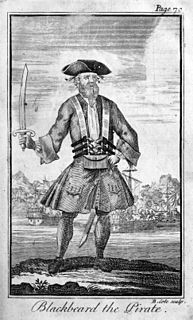 W
WPirates vs. Ninjas is a comedic Internet and gaming meme regarding a theoretical conflict between archetypal Western pirates and Japanese ninjas, generally including arbitrary "debate" over which side would win in a fight. The meme is sometimes referred to as PvN and has a long history on the Internet. Humorist Jake Kalish writes that the reason for the popularity of the meme is that "pirates and ninjas are both cool, but kind of opposite, see, because one is loud and the other ... never mind." Several competitive web sites and games based upon the ninjas vs. pirates theme appeared later, including Pirates vs. Ninjas Dodgeball.
 W
WPower Rangers Ninja Steel is the twenty-fourth season of the American children's television program Power Rangers. The season was produced primarily using footage, costumes, and props from Japanese 39th Super Sentai series Shuriken Sentai Ninninger with minimal costume and prop elements being recycled from Ressha Sentai ToQger. The show is produced by Saban Brands and premiered on Nickelodeon on January 21, 2017.
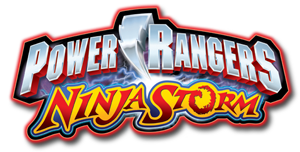 W
WPower Rangers Ninja Storm is an American television series and the eleventh season of the Power Rangers franchise, based on the 26th Super Sentai series Ninpuu Sentai Hurricaneger. The season marked a series of firsts in the franchise, being that it was the first to be filmed in New Zealand, the first to not be produced by MMPR Productions, and the first to air on ABC in its entirety; debuting on February 15, 2003 on ABC Kids.
 W
WPucca is an animated television series based on a series of shorts created by the South Korean company VOOZ Character System. The series revolves around Pucca, a young girl who is in love and obsessed with a ninja named Garu. It also has aired on Champ TV and MBC TV in Korea. Internationally, the series aired on Toon Disney's Jetix block in the United States, Europe, and other locales on the Jetix channel. In Canada, the show aired on Family Channel.
 W
WRandy Cunningham: 9th Grade Ninja is an American-British-Irish animated television series created by Jed Elinoff and Scott Thomas for Disney XD. It was produced by Titmouse, Inc. and Boulder Media Limited for Disney's London-based content hub. Many of the character designs were supplied by Jhonen Vasquez, the creator of Invader Zim. The first episode premiered on Disney XD on August 13, 2012, and the final episode premiered on July 27, 2015. Voice direction for the series was done by Ginny McSwain. Shaun Cashman was the supervising director.
 W
WRaven is an American drama series that originally aired on CBS from June 19, 1992 to April 30, 1993. This hour-long action drama featured martial arts, adventure, humor, mystery and secret societies.
 W
WThe Samurai is a Japanese historical fiction television series made by Senkosha Productions during the early 1960s. Its original Japanese title was Onmitsu Kenshi . The series premiered in 1962 on TBS and ran continuously until 1965 for ten self-contained story arcs (seasons), usually of 13 episodes each. Also created were two black-and-white feature films by Toei Company, made in 1964 by the same crew which created the TV series, and a stage show.
 W
WSekai Ninja Sen Jiraiya is a Japanese television series that aired on TV Asahi and its affiliates from January 24, 1988 to January 22, 1989, lasting 50 episodes. It was the seventh installment in Toei's Metal Hero Series franchise of live-action superhero shows and the last of the Showa era. The series centers around a young ninja master named Toha Yamaji, who must face against numerous ninja masters from different parts of the world by donning a special armor to become his alter-ego Jiraiya.
 W
WShuriken School is a French-Spanish animated series that first aired on August 20, 2006. It was produced by Xilam Animation and Zinkia Entertainment in association with France 3 and Jetix Europe.
 W
WShuriken Sentai Ninninger is a Japanese television series, the 39th entry of Toei's long-running Super Sentai metaseries, following Ressha Sentai ToQger. It is the third ninja-based Sentai, and the fourth to be based on Japanese mythology and culture and premiered on, February 22, 2015, joining Kamen Rider Drive, and later, Kamen Rider Ghost in the Super Hero Time line-up on TV Asahi affiliate stations, until concluding on February 7, 2016. Ninninger also serves as the 40th anniversary of the franchise. The lead screenwriter for the series is Kento Shimoyama and Kousuke Yamashita serves as the series' composer. Its footage is used for the 2017/2018 American Power Rangers season, Power Rangers Ninja Steel and its follow-up season, Power Rangers Super Ninja Steel.
 W
WSupah Ninjas is an American action-comedy superhero series, created by Leo Chu and Eric Garcia. The series aired on Nickelodeon from January 17, 2011 to April 27, 2013. It ran for 2 seasons. The first season was filmed in Los Angeles and the second season was filmed at 31st Street Studios in Pittsburgh. On March 15, 2012, it was the announced that the series was renewed for a second season that premiered on February 9, 2013.
 W
WThe Teenage Mutant Ninja Turtles are a fictional superhero quartet of teenage anthropomorphic turtle ninja that appear in a self-titled franchise consisting of comic books, animated children's cartoons, feature films, and other tie-in products. The characters were created in 1984 by comic book writer-artist team Peter Laird and Kevin Eastman, who named the four turtles after Italian Renaissance artists, and published the characters' adventures in comic books published by Mirage Studios. Within their stories, the turtles were trained in the Japanese martial art of ninjutsu by their adoptive father, Splinter, an anthropomorphic rat sensei. From their home in the sewers of New York City, they battle petty criminals, evil overlords, mutated creatures, and alien invaders while attempting to remain hidden from society. During the peak of the franchise's popularity in the late 1980s and early 1990s, it gained worldwide success and fame.
 W
WThe Way of the Tiger is a series of adventure gamebooks by Mark Smith and Jamie Thomson set on the fantasy world of Orb. The reader takes the part of a young monk/ninja, Avenger, initially on a quest to avenge his foster father and recover stolen scrolls. Later books presented other challenges for Avenger to overcome, most notably taking over and ruling a city.